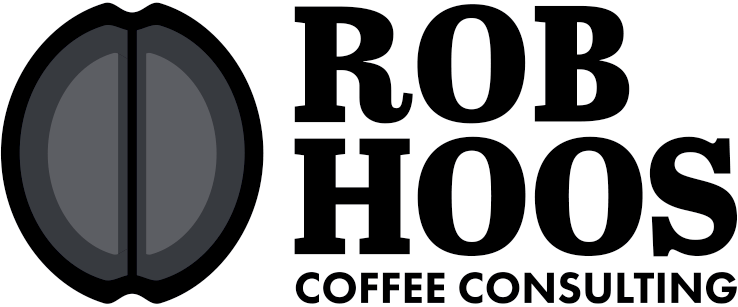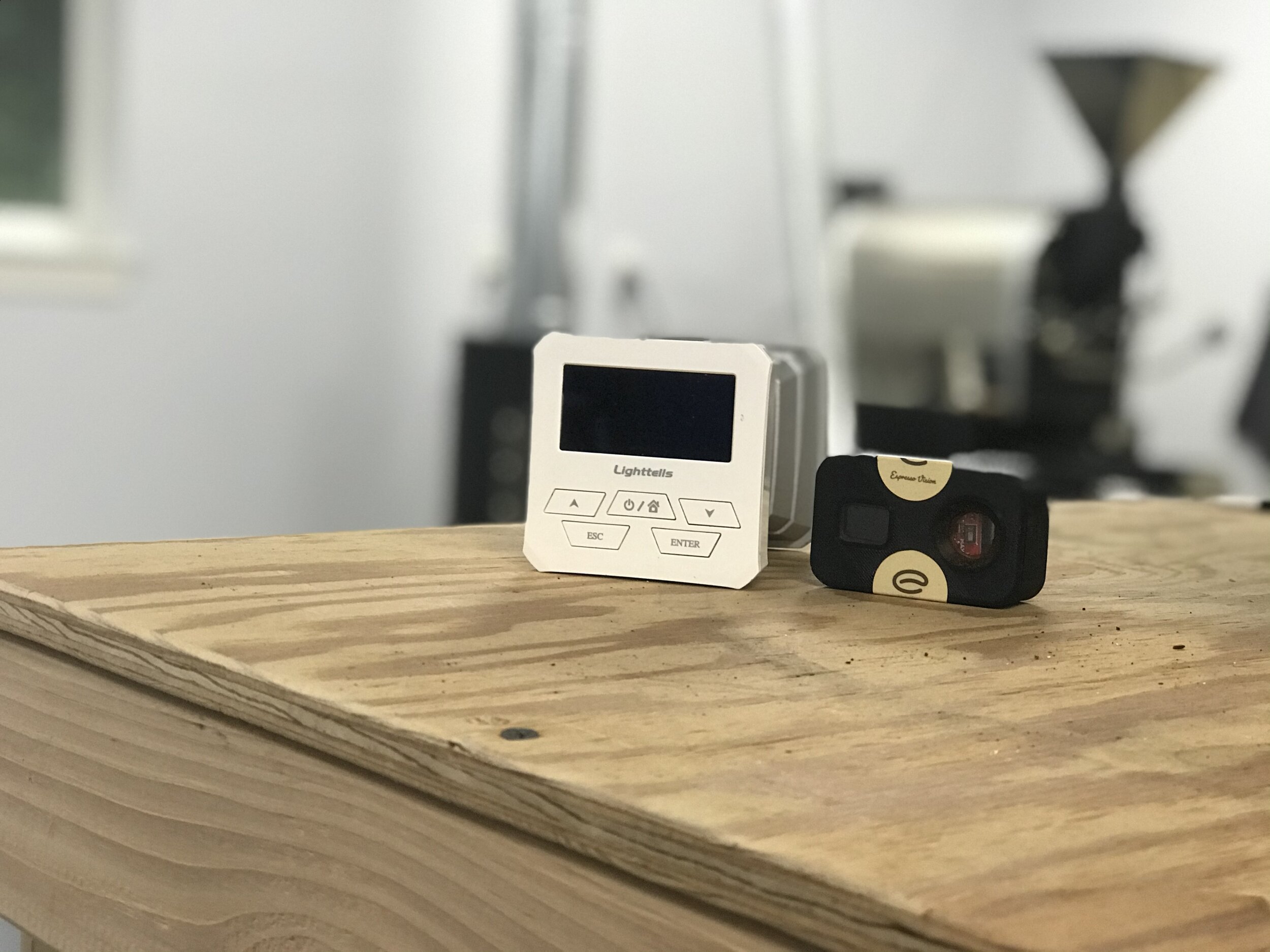A tale of two color meters…
TL;DR
Both these color meters are awesome. One of them is more affordable than the other, but it can only measure ground coffee. I have a chart with lines and numbers. Make sure you are following protocol to have an accurate color measurement program for your Quality Control program.
I am convinced that finished color of roasted coffee is one of the most important quality control metrics we can take. Though early on I didn’t place too much stock in the measurements, it is now something that I recommend to every single one of my clients as the next step in making sure that they are hitting their marks and being consistent. It is a way to insure accurate thermocouple measurement. It is a way to transition roast profiles from machine to machine. It is the best way to make sure you are giving your clients and customers a consistent roaster product. But there is nothing remotely romantic about it.
When I first started roasting, I had associated color meters with the larger and more commercial coffee roasters. To reduce coffee to a single measurement seemed to fly in the face of all of the skills that I was trying to develop. It seemed to negate all of the hard work that was part of the entire supply chain. Flavors, processing nuance, finesse during the roast, all brought to one cold number.
However, the proof is in the pudding (as they say… whoever they are). The more I have taken color measurements, compared them to my ability to discern taste differences, and read current research surrounding roast profile development, the more convinced I have become.
The huge problem is that color meters, and technology for measuring the color of roasted coffee, is really freaking expensive! Most of us don’t have multiple thousands of dollars sitting around that we can spend on a color meter. And while I completely respect those of you who are in this predicament, I have some exciting news. There are some color meters that come in for less than $2,000 USD.
Two of the meters that I have been using frequently that fit this bill are the Lighttells CM 100 (the 100+ is awesome too, and I am excited to check out the CM 200) and the Roast Vision. (I also use the Color Track benchtop model, but that one doesn’t fit in this experiment).
To be clear, I purchased both of these and did not receive them as gifts from the manufacturer… nor do I receive any kickbacks. So, this is my opinion.
What follows is a very basic comparison of the two, and the ways in which I use them in my QC.
Lighttells and Roast Vision
First of all, let me give you some general guidelines and approaches I use when taking color readings.
Time waits for no-one: You have to take the color reading the same general amount of time after roast. Color will drift slightly as the coffee ages, and because of this you could get a different color reading simply by taking the measurement at a different time. Though it may not be ideal, the best way to make sure this drift isn’t happening is to just check them immediately after the roast. I would recommend waiting till the coffee has cooled, and you’ve taken the out-weight for your weight loss calculations. Then pull as small of a sample as you can get away with, and run it through.
Always take an average: Sample preparation differences, and variability within the coffee can cause variability in the readings. Much of the time, color readings vary because the equipment is sensitive to subtle differences in how the sample is prepared and the distance of the sample from the light-source. Sometimes the color difference could be due to green coffee defect, or sugar content differences, or differences in how individual beans roasted in the batch. The bottom line is this: one reading is never enough. My recommendation is to take three readings and then take an average of those three readings. If one is a significant outlier… then take a fourth reading and substitute it for the measurement that seems to be in error. You may have to re-calibrate the device and try again.
Grind Fine: The grind level will greatly influence the measurement that will be taken. Grinding coarser seems to cause the reading to be “darker” and closer to the whole bean color. Grinding finer will make the measurement “lighter” and more disparate from the whole bean reading. To my mind, the finer you grind, the more of the inner bits of the coffee bean you are permitted to observe, and the more averaging happens. For this reason I feel convinced that grinding finer is the way to go. I personally like to use a fine espresso grind (I use 15 on the Niche Zero).
Recalibrate Often: With the Lighttells CM 100, I prefer to calibrate before taking a set of three readings… or at minimum make sure that I am getting the appropriate reading when “measuring” whole bean or ground color on the calibration tile. I have seen my machine, while generally performing admirably, occasionally fall out of calibration for seemingly no reason. This is why I suggest paying attention to off readings, and recalibrating as necessary (even in the midst of a set of three readings). The Roast Vision claims it doesn’t need to calibrate… that’s fine, just make sure you keep the clear acrylic window clean so there is nothing modifying your reading.
Keep the instrument clean: I make sure that there is no ground coffee interfering with the ability of the device to read the color of the coffee. I do this by making sure to keep the color meter, calibration tile, etc. as clean as I possibly can. Have a brush, set of brushes, and some cotton swabs handy for making sure that you can accomplish this goal. I would also suggest making it a weekly cleaning task to do a more thorough job cleaning off the glass components.
Remember that there is wiggle room: While it would be amazing to have the exact same reading every time you do anything… this is likely not possible. Machines in and of themselves have error… our sample prep has error… and coffee is an agricultural product which adds some potential for error as well. I generally aim to land somewhere within +/- 3 points of color on the Agtron scale. My preference however is actually -2/+1. This is because the standard specialty coffee customer is less likely to be upset if the coffee is a little more roasted ( -2, because remember Agtron has lower numbers for darker roasted coffees, and higher numbers for lighter roasted coffees). That same customer may be a bit unhappy though if their coffee is overly harsh, acidic, or vegetative.
Anyway, those are just some basic guidelines. Hopefully they are helpful to you and your team as you strive to hit consistent roasting goals in a world where thermocouple measurements can be a touch misleading.
On to comparing the two color readers…
The Roast Vision (from Espresso Vision) is the most affordable color meter that I am aware of on the market place. It can only do ground coffee, and it measures on its own scale as opposed to the Agtron scale. It is however simple to use, compact, and has fairly good repeatability in my experience. The fact that it can only do ground coffee color is a touch limiting as whole bean color can be a very important measurement as well (though ground is likely the most significant… so that helps there). As you will see below, in order to fall within my recommendations for consistency, it is important to make sure that you hit the number you are aiming for exactly. If you drift up or down one number, it is more than 3 Agtron points different which means that you may be a bit off the mark for consistency.
The Lighttells is cool because it is affordable, can do both whole bean and ground color readings. It also uses the Agtron scale which is a bit more universal in our industry. That being said, unless you need to communicate roast colors with other roasters who are using Agtron devices, then it may or may not be that big of a deal. The Lighttells is fairly repeatable, though it is very sensitive to how you prepare the sample for reading. Because of this, make sure that your team is dialed in on how to do it. If you don’t take the time to get everyone appropriately calibrated then some of your grinder drift could be caused by human error / variability.
Below you will see a chart that I have made with my first round of data taken from both devices for the sake of comparison. I measured 47 different coffees. For each coffee I measured the ground coffee 3 times on both color readers. All of the coffee was ground on an espresso grind (17 of them were ground on #10, 30 of them were ground on #15 on the Niche Zero grinder).
Above you can see the data points from my coffee measurements. You can also see a linear trend line which I am currently using as a rough way to translate Roast Vision readings to known Agtron ranges for my own benefit.






